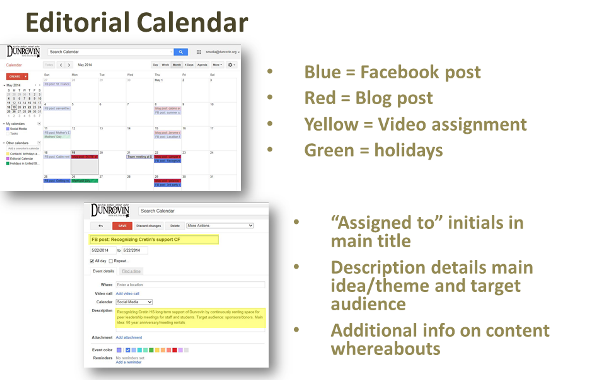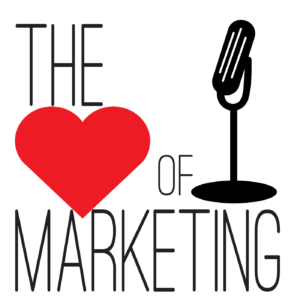Two challenges small and medium business face with content marketing are managing workflow and creating content to publish. Here are two resources discussed in the TDS Twitter Chat on July 23, 2014.
Content creation worksheet
Using a worksheet like this one will help you focus your efforts on creating content that delivers value to your audience and keeps you on strategy.
Topic: This is the name of the project/piece of content to be created
Audience: Identify who your target audience is for the piece of content. You may have between 2-5 key audiences you need to reach. Map each piece of content to the primary concerns and functional responsibilities of this audience segment.
Objectives: What action do you need the customer to do to achieve your goal? What channel and message to you need to communicate for them to take that action?
Theme: Identify how this piece of content will support your brand message or unique selling proposition. Answer the question: “Only we …”
Type: Identify the format this piece of content will be created for. For example, will it be:
- A blog post
- A video
- A social media post
- An image or infographic
- A SlideShare presentation
Use this worksheet to reimagine pieces of content for different target audiences/needs and for different types/formats of delivering the content.
A simple editorial calendar for content planning
One client is using Google Drive as the central location for members of the marketing team to access content elements like photos, images, videos and strategy documents. We set up a simple system to use the calendar feature for assigning content creation projects and scheduling publish dates.
The month-at-a-glance view of the calendar enables you to manage workflow. Google Calendar has a color coding feature we use to identify which platform the content will be for (i.e. blog or Facebook).
You can open any calendar item to get more detail for individual projects. This tells you who is responsible for creating and publishing the content. It also describes key elements for that piece of content, such as:
- The main idea/message for the post
- The brand theme
- The target audience
- The primary audience concern it speaks to
- The call-to-action
- Other details
Keeping it simple is a key to success. You only need to have someone manage the calendar and make sure the team has access and checks it daily.
"John’s work was brilliant. I loved his process for taking everything that was in my head and bringing out the most important information for my marketing message."

Stacy Pearson
President, Protected Future
"John was always very responsive to Sales Reps and customers. He was a terrific listener and very interested in delivering tools and information necessary for achieving success."

Barry Link
Sales Manager, Katun Corporation
"John is a professional who understands how the worlds of marketing and sales can work together to deliver strong revenue. His attention to detail, willingness to listen, and sense of humor made him a preferred marketing resource in the Sales Department."

Paul Kramer
Inside Sales Manager, Thomson Reuters
"John was quick to pick up on our mission, core values and audience and translate it into a marketing strategy. He helped us define our brand voice and how to use it in all our marketing – in print and on the Web. He led the charge in bringing our website up to date with search-optimized, customer-focused content. In addition to his insights on marketing and technology, he also had an organized plan for how to make it all happen. The thing I appreciate most about John is the authentic, principled person he is and how that is reflected in his work."

Jerome Meeds
Executive Director, Dunrovin Retreat Center
"As my client and day-to-day contact, I found John to be a very unique person, having both the detail orientation to get things done and the vision to plot where all this is going. His talents are multi-dimensional. He is comfortable and conversant as a hard-nosed businessman, a creative, and a people-oriented manager. I admire and respect John’s accomplishments and potential."

Scott Hornstein
CMO Consultant, b2p Partners
"John worked with my team at Thomson on Marketing Communications consulting projects and product marketing, and did an excellent job. He was very thorough in his work and delivered his product on time. Great guy to boot!"

Jeff Patrias
VP Global Creative Services, Thomson Reuters
"John was on “the edge” of the best ways to market products and ideas as they relate to internal business communications and business-to-business marketing and communications. I always knew where I stood with John. He gave good direction. He can do the left-brain detail-oriented stuff as well as the right-brain creative stuff."

Carol Pettitt
Principal, Carol Pettitt Communications
"John is a disciplined manager with excellent direct response experience. He is organized and results-oriented."

Jane VanTassel
Marketing Director, Thomson Reuters
"John is an incredibly talented marketer, storyteller and writer. He has the ability to create great direct marketing campaigns that generate results. He has a proven methodology of teaching potential customers, reaching potential customers and getting them to act. I would highly recommend him if you want to increase revenue and customer loyalty."

Daren Klum
CEO, Secured2 Corporation
"It was a pleasure to work with John not only on day-to-day operations, but also on key projects that made a major impact to the organization. He was always able to deliver effectively from his deep well of classic and direct marketing experience!"

Todd Tagatz
Marketing Director, Katun Corporation
"John is a master of the art and science of B2B direct response marketing. His work served as a model for the rest of the team, especially in integrating consistent and effective communications across multiple channels. He really helped our group improve the level of our marketing and exceed our goals. Day-to-day John is a great communicator and team builder. He’s always willing to listen to others and to take the lead, when necessary, to keep projects moving. He was great to work with!"

Tim Brantner
Direct Marketing Manager, Mayo Clinic
"John’s ability to explore market conditions as well as customer need made him very successful as a product marketing manager. His drive to understand the market and industry trends made my job of selling products he managed that much easier. I highly recommend John."

Chad Johnston
Project Manager, CenturyLink
"John’s skills have been a perfect fit for Thomson Reuters Marketing Services. Any organization would be fortunate to have his mix of creativity, strong work ethic and strategic thinking."

Joe Andrews
VP Brand & Marketing Communications, Thomson Reuters







